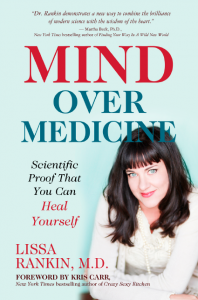 The “to-do” list has become…..ubiquitous! (I love using that word.) Wherever your eyes fall, people are referring to them. Making them, checking items off on them.
The “to-do” list has become…..ubiquitous! (I love using that word.) Wherever your eyes fall, people are referring to them. Making them, checking items off on them.
There are new programs to bring the “to-do” list into electronic formats, mobile apps – anything to make the modest list into a 21st century technology., complete with colors, beeps and reminders – attachments to your electronic calendars. The bells and whistles are seductive and often very useful – up to a point. So what’s the problem?
Let me be straightforward. I like being organized as much as any modern day person. Everyday, I work with people chained to their “to-do” lists in the hope of “getting things done.”
I happen to be an executive coach/consultant and entrepreneur (not to mention, mother, grandmother, friend, teacher, gardener, neighbor, writer, board member and more) so staying organized it vital. My daily tasks, like yours perhaps, range far and wide between my many projects, my home and garden, family, friends, wellness and personal development. Then there are the externally imposed deadlines I must meet – insurance payments, dog license renewals, and the like. I hate to pay late fees or fines, so staying on top of these is also critical to me. However, I know that there is something more important than simply checking off things that need doing.
I know my life matters…that it works best when I balance my many interests, passions, loved ones and tasks in a way that moves me forward into a vision I hold for contributing to the planet. Hopefully, you do too!
As an executive coach, I help leaders reflect on the “right” things – the things that leverage their intentions and projects – at home and at work . The things that make life yeasty and rich – meaningful. They begin with setting clear intentions, go on to prioritizing their commitments and working from that deep understanding.
This isn’t a new idea. It’s been around for a long time and many famous books and lectures refer to it. (Steven Covey wrote about it as did David Allen and scores of others.) But our culture has somehow lionized the “to-do” list as the vehicle for getting things done. And in the process caused a lot of confusion – which ultimately mean pain. Here’s how.
When activity (the endless items on the “to-do” list) controls your day, you are living into the great curse of modern times. What’s the curse? It’s the confusion between action (doing those things that further your clearly established intentions – priorities) and doing “stuff” that appears to need doing (which are endless) and which aren’t aligned directly to what is most important to you and most urgent in any meaningful way.
In the scramble to find more time, to get more done, to complete the list, people mistake one thing for another. Action includes activity but is the large, clear driver for getting the done the things that matter! Action has power – an inner dynamism. Activity are the smaller steps to achieving that dynamic vision for your life. And if you confuse the two, you often end up wondering why you feel unsatisfied, dispirited, unbalanced.
The antidote to the curse takes a little time at first, and pays off in clarity and purpose driven action. To establish the habit of beginning the day’s plan from the perspective of your intentions, you must first establish them. After a period of reflection on the domains of your life – ntimacy, money/finance, career, family/friends, health/fitness, personal growth, fun/recreation, contribution, you set your intentions for each.
It may sound like: ACTION: health = eat well and stay fit (Activities = exercise 3 x’s per week, shop and cook organic, sustainable foods) Your planner placing the shopping day and times and items to purchase down and the exercise days and times on calendar.
I use the famous quadrant system each morning: 4 boxes labeled Urgent & Important (what matters most and has to get done today) Urgent & Not Important (externally imposed deadlines – pay taxes, for example that do not further my intentions AND must get handled) Not Urgent and Important (these align with my priorities) and Not Urgent and Not Important (my fanciful activities should a block of time suddenly appear). The last box I may never get to – or I may do on a break from the rest.
There are other systems to categorize your activities according to your priorities. Find one you like. Whichever one work best, it must begin with intention setting and prioritizing to be efficient and to be powerful….otherwise you find yourself lost in the spin of “I’m really busy…but what exactly am I accomplishing???”.
Afflicted with the curse of the “to-do” list, hundreds of thousands of folks keep endlessly repeating the phrase, “I’m so busy,’ without waking from the hallucination of being lost in rounds of activities that don’t reflect their values, deep concerns or intended outcomes.
Don’t let that be you! You are not a victim. Take some time to reflect on what matters most. Male a list. Number the items by priorities (soul-searching and hard but so worth it). Break the actions down into activities (steps) in sync with a calendar. Include the externally imposed deadlines. Check your calendar against the top 10 priorities. Are they represented most often? If not, adjust! It will initially take some time, however soon, it will be an automatic planning habit that sets you up for balance, success and joy!
Work from that plan – a plan that takes all of your life into account, allows for the inevitable outside demands and leaves you, at the end of each day, clear about what you are up to in this world.
End the curse and step into that bigger, more meaningful life.









